It wasn’t there, and then it was; an electric blue flash out on the far horizon. The ocean’s surface was dark and relatively smooth under a bright mid-day sun, while the lighter blue sparkle was so tiny that it was literally hard to see. We were standing on the deck of a beach-side house high up over the Pacific, watching the swimmers and surfers down below us, when that blue flicker first caught my eye.
Over the course of five minutes it came closer and closer, until it finally became obvious that we were looking at a reasonably large metallic-blue balloon floating on the surface. It was strange, though, because the balloon ignored the dictates of the light breeze, moving first to our left, then to our right, then back to the left, and occasionally disappearing altogether for seconds at a time.
It’s speed, too, seemed unusual. Sometimes it moved slowly, while at other times it seemed to race towards the beach right in front of us.
It wasn’t long before something clicked in my mind and I told my brother and my son, both of whom were standing next to me, that the balloon had to be tethered to something alive; something large and fast that was literally swimming towards the beach.
That shiny blue marker paused one final time, maybe 75 yards out past the furthest surfer, before our suspicions were confirmed. A giant fin cut the water about 40 feet from the balloon, followed by a huge body breaching the surface. Then, after another minute or two, the balloon vanished. We never saw it again.
We did see something else before too long, though.
A pod of dolphins.
While that’s a fascinating story in its own right — I’m still trying to figure out why someone would tether a balloon to a great white shark — it also illustrates a point I’ve been thinking about for years. The way an object moves on, or in, the water makes all the difference in the world. If that shiny balloon had simply drifted with the breeze and the ocean current, it would never have grabbed and held my attention. Yet when it moved in a way that seemingly defied the laws of physics, I couldn’t look away.
One of the keys to fly fishing — and perhaps the biggest key to dry fly fishing — is understanding the difference between natural movement and unnatural movement.
Natural movement is the norm. It’s what a trout sees every single day. It’s personified by a nymph drifting along in the current, or the flow of water over and around rocks, or a mayfly dun floating on the surface as its wings dry. When people (or other creatures) don’t interfere, fish are free to feed wherever and whenever they so choose.
Even though fish pay attention to natural movement — it is, after all, a huge part of their lives — it doesn’t typically cause them stress or alter their patterns of behavior.
Unnatural movement, though, is a different story. It’s an alarm bell that something out of the ordinary — and quite possibly something dangerous — is in the immediate vicinity.
Want an example? The fleeting shadow cast by an osprey certainly qualifies. So does the movement of an angler wading nearby. As does the flash of a fly rod, or the abrupt descent of a fly line, or water droplets spraying out from a leader. They all have the potential to either put a fish off its feed or send it fleeing for parts unknown.
Perhaps the most important ‘unnatural’ movement for trout fishermen goes by a unique name. We call it “drag.” We experience “drag” on moving water when our line or leader causes our fly to skate across the surface or swim through the depths below.
I should point out that there are certainly times when we want drag. When we lift a sunken wet fly so that it rises to the surface, or swing a streamer across the current, or skitter a dry fly — a caddis, perhaps — to tempt a trout feeding on the naturals, we are purposefully imparting movement through the precise and considered application of drag.
In those cases, drag replicates the natural movement from an emerging mayfly or an undulating leech or an egg-laying — and vulnerable — caddis. Our quarry associates those particular movements with “food” — and food is always good.
At the same time, though, adding unnatural movement to a fly — and especially to a fly that should float along as if it’s not attached to anything at all — is akin to throwing rocks at the fish we’re trying to catch.
Most of our dry fly fishing is predicated on our fly floating naturally on the surface of moving water. You’re no doubt familiar with the phrase for that particular achievement. It’s referred to as “a drag-free drift,” and I suspect that a million words have been written on that particular subject over the last century or so. But why are we so focused on avoiding drag?
The answer, of course, is that trout react to an unnaturally dragging fly in much the same way that you or I would react to a large blue balloon racing across the surface of the Pacific Ocean. First, with surprise — Wow, what’s going on over there? — and then, when reality eventually reveals itself, with alarm.
We’re predators. That’s been our role for untold millennia. Movement always catches our eye. Yet, when it’s a non-threatening movement that falls within the familiar rhythms of the world around us, we dismiss its significance and immediately fall back into our typical pattern of behavior.
On the other hand, unnatural movements grab and hold our attention as we try to discern exactly what’s happening and whether there’s a threat at hand. Given that fish react in much the same way, it’s no surprise that a fly skating across the surface is likely to reduce our chances for success.




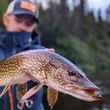

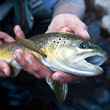












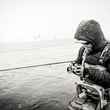




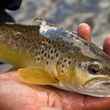
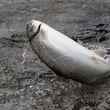



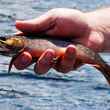

Comments